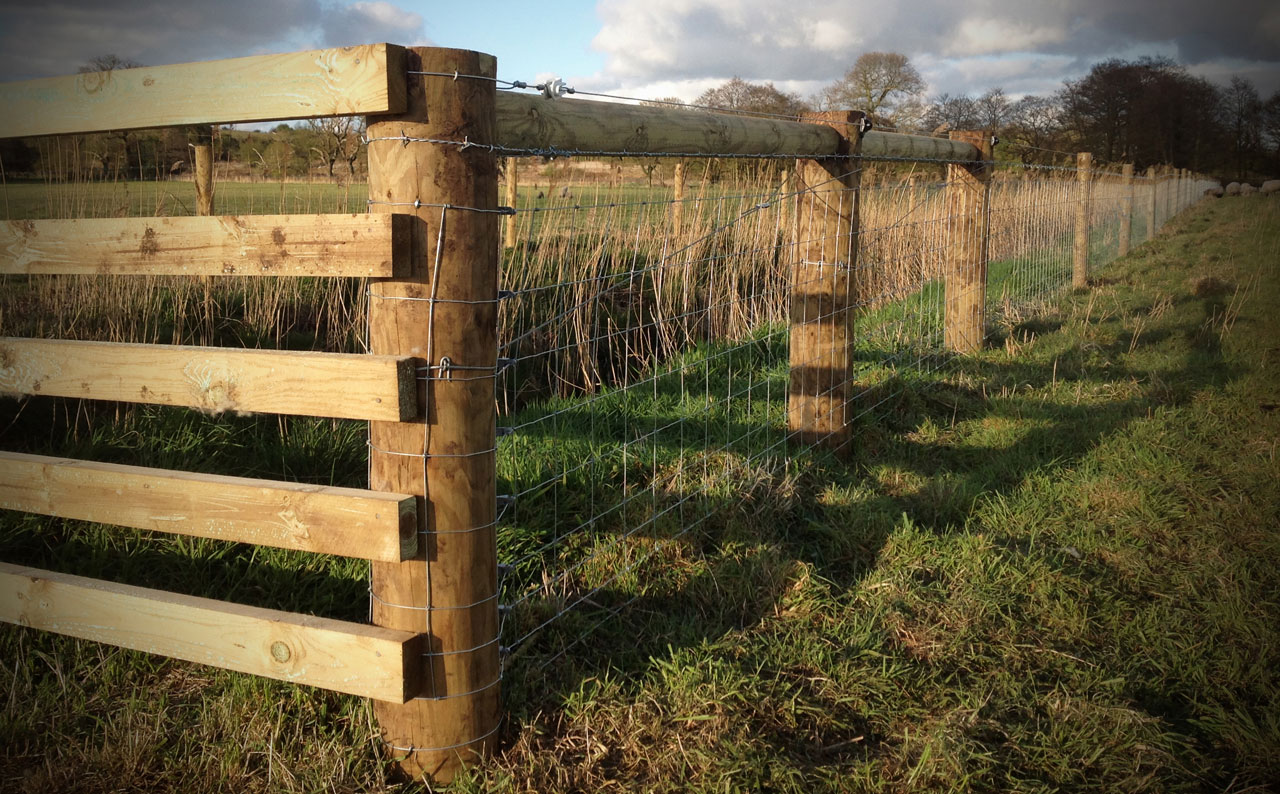Fencing land, whether for security, stock management or to keep wild animals out, can be a bone of contention. What is good for stock management may pose danger to wildlife; what keeps trespassers off crops or reduces the number of desire lines across a field, might hinder access to public footways, putting you at odds with the general public.
At Dodd and Co, we work with both private landowners and the Norfolk Wildlife Trust, so we are able to understand the many problems and issues that fencing can cause. And, having understood the problem, we are well-positioned to help you find a solution.
This article outlines some of the guidelines for fencing as issued by another wildlife trust – the Yorkshire Wildlife Trust, but much of what is written is applicable here in West Norfolk.
Risks to wildlife are posed mainly by barbed wire fencing with animals such as deer jumping the fence but getting caught on the top strand. Another risk might come from erecting a wire fence across a path used regularly for travel by wildlife, including birds in flight.
The risk to the public comes mainly from people climbing fences or sustaining cuts from barbed wire. The public may come into contact with fencing when a fence runs alongside a narrow path or a footpath crosses a field boundary.
To reduce these risks, you might consider some of the following actions when fencing a field.
- Use fencing material other than barbed wire where there is an element of risk of injury.
- Don’t use a top wire of barb, buy put a plain wire on plastic runners so the wire can be electrified when stock is in the field.
- Don’t use barbed wire near public footpaths or known wildlife runs – don’t use barbed wire within one metre of a stile or kissing gate. And use barbed wire only on the edges where the public don’t or shouldn’t go.
- Where existing barbed wire goes right to a gate, cover the barbs for a section either side of the gate.
- Create alternative routes for wildlife e.g leave internal gates open where the site isn’t grazed.
- Make fencing visible to prevent accidental contact.
- Use high tension wire to prevent entanglement. loose wire will tangle round legs.
There are however some difficulties that arise from these measures that you should be aware of.
- If badgers are a problem, leaving gates open will allow the animals to wander onto your land.
- Leaving gates open can also offer temptation to thieves and fly-tippers.
- Using electric fencing can be expensive and there is increased staff time in setting up and maintenance.
So, as can be seen, there is no way to specify what action to take on a generalised basis. Each case needs to be taken as an individual issue and a bespoke solution provided. Through identifying the problems and your own situation, we will work with you to arrive at a fencing solution that meets both your requirements, public and wildlife safety and all within your budgetary constraints.




